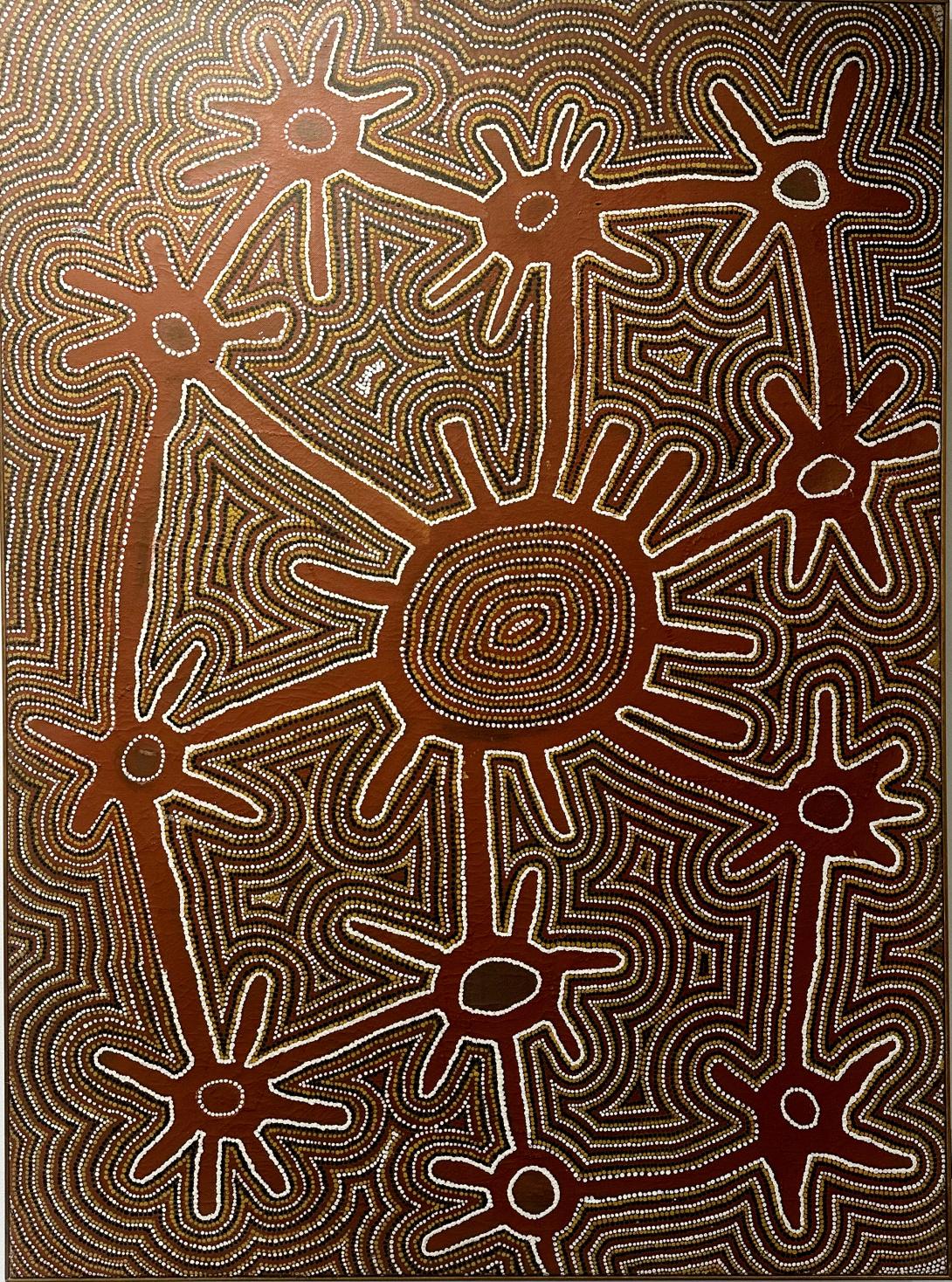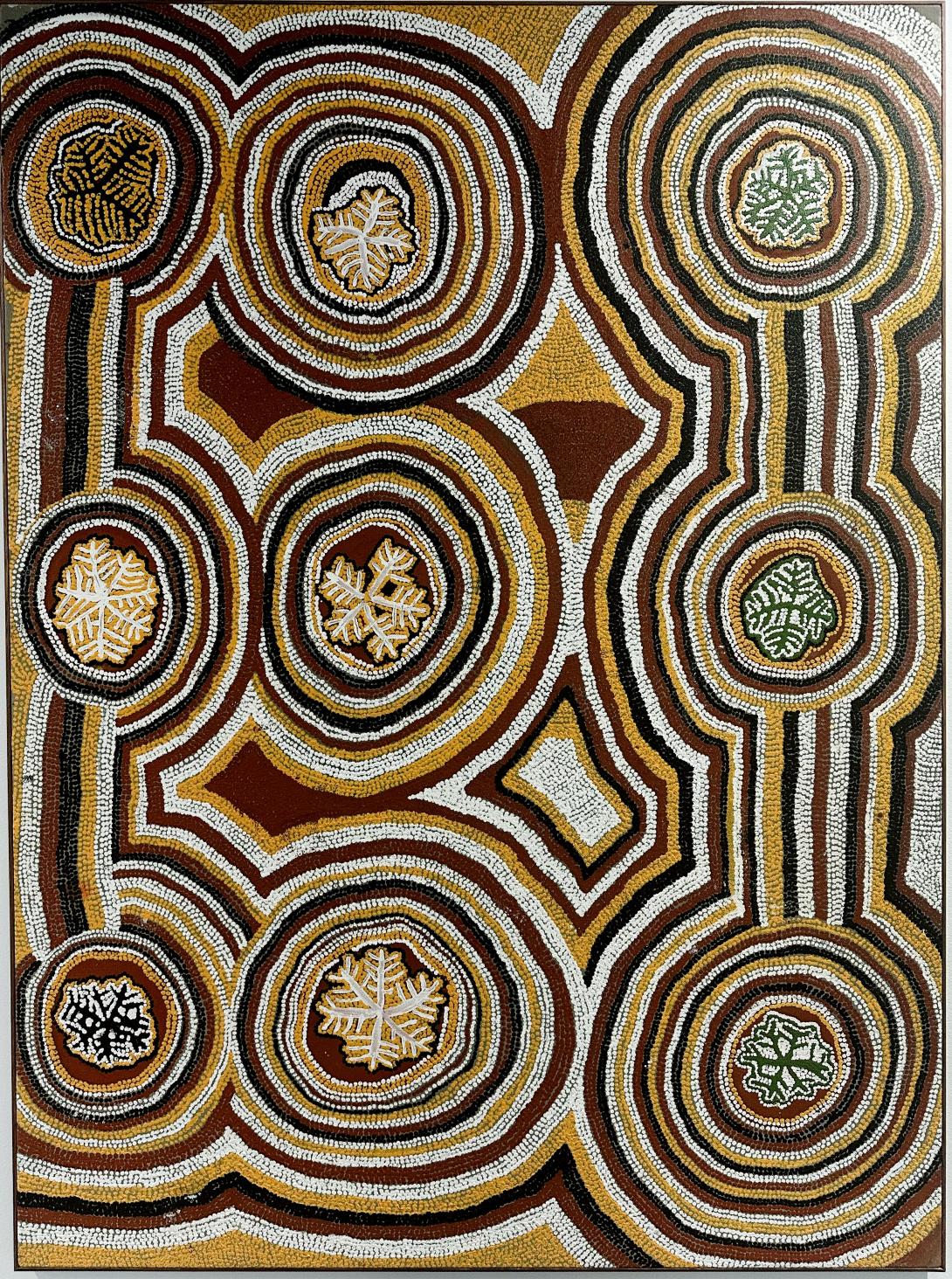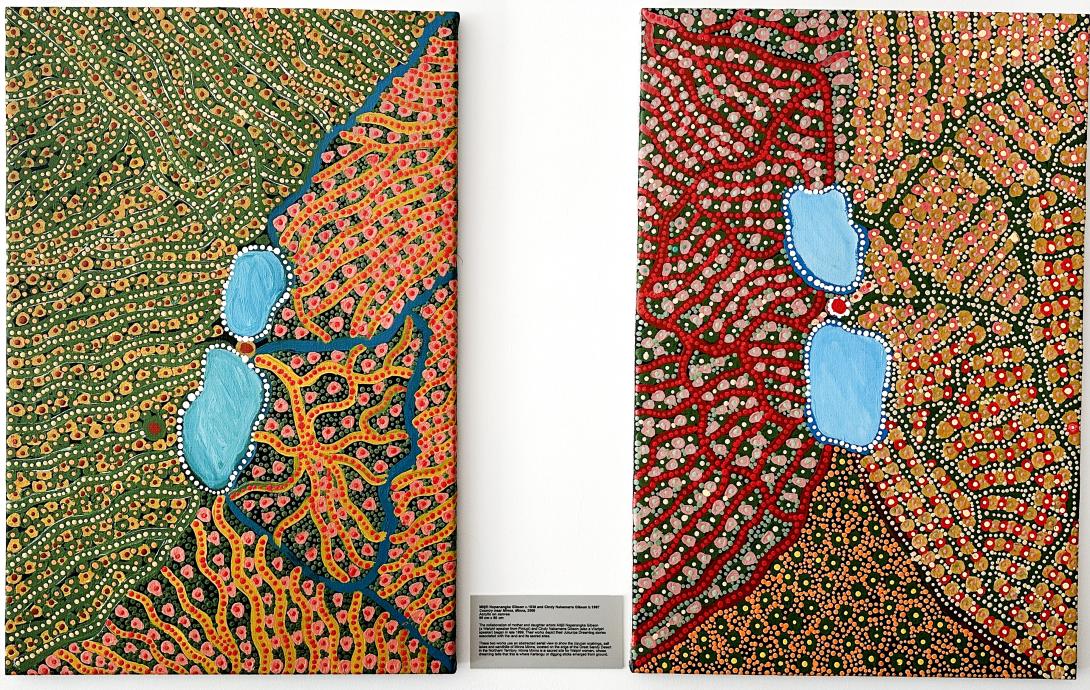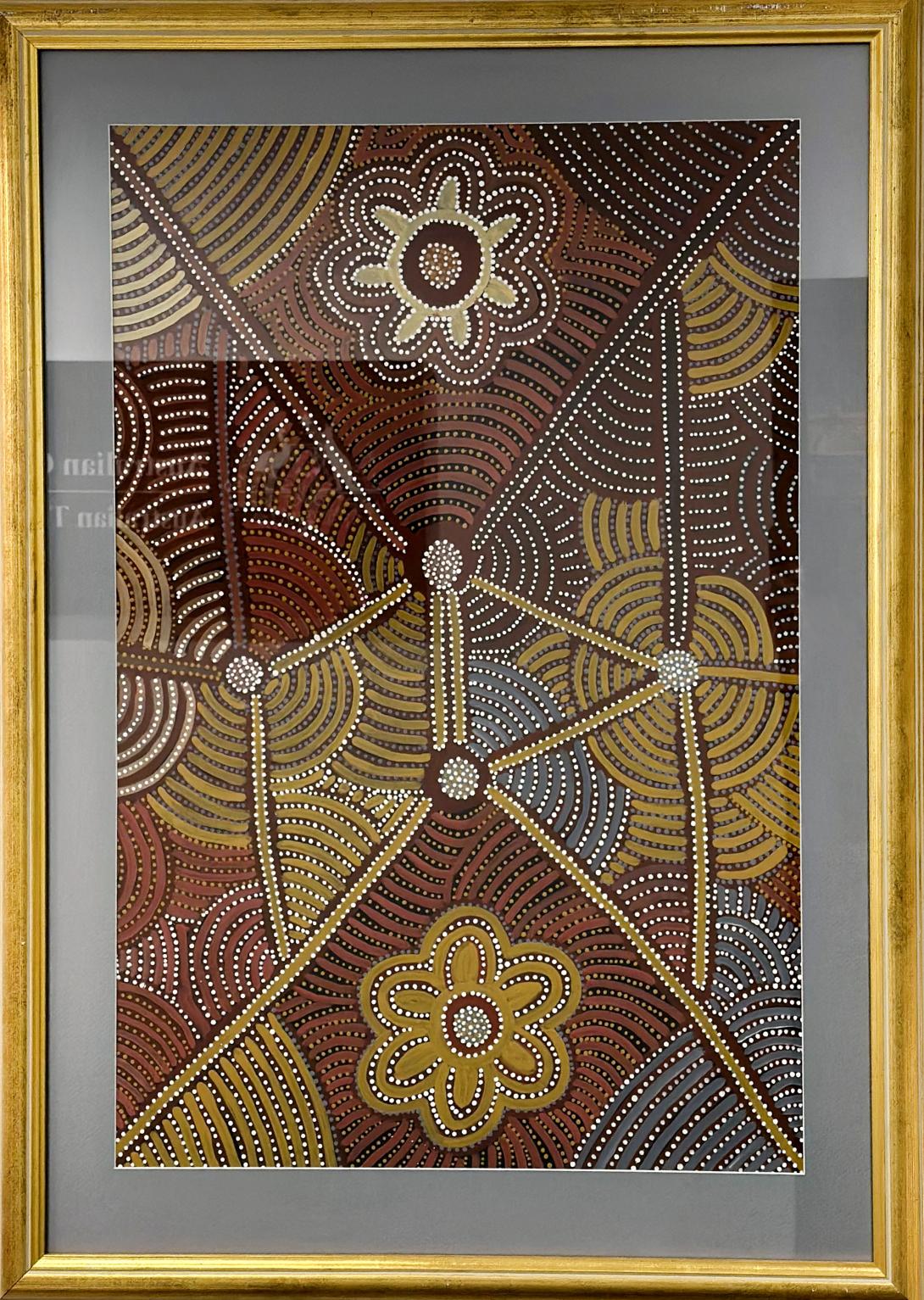As part of our Reflect Reconciliation Action Plan, the ATSB's collection of indigenous art is once again on display in the ATSB head office in Canberra.
By having the works on display with explanatory panels in prominent areas of our head office space, the ATSB aims to begin a conversation to increase the understanding, value and recognition of Aboriginal and Torres Strait Islander cultures, histories, knowledge, and rights through cultural learnings for staff, and our domestic and international visitors.

Patrick Olodoodi Tjungurrayi c.1935
Wirritpi (Rockhole), 1987
Acrylic on canvas
1130 cm x 830 cm
Patrick Olodoodi Tjungurrayi, a Kukatja and Pintupi painter, was born near Puntujarrpa in the Gibson Desert in Northern Western Australia. A senior law man, he began painting in the 1980s.
In 2008, Patrick Tjungurrayi won the Western Australian Indigenous Art Award sponsored by the Art Gallery of Western Australia. His work is described as having a powerful presence – masterful and monumental.
This work depicts a large rockhole called Wirritpi surrounded by smaller rockholes as well as the location of native vegetation including bush tomatoes (kumpupatja).

Albert Tjakamarra Nagomara c. 1925
Artist’s Country (Kutukutu, near Lappi Lappi), 1989
Acrylic on canvas
1130 cm x 830 cm
A Kukatja speaker, Albert Tjakamarra Nagomara was one of several Tjakamarra men in the Balgo community whose work primarily concerned Water Dreaming and rituals associated with rainmaking. His works generally use strong, simple motifs, such as roundels and watercourses, but beneath their simplicity lies a great reservoir of Law matters.
The work depicts the artist’s country, Kutukutu, near Lappi Lappi (Lake Hazlett in the Tanami Desert in Central Western Australia). The work shows a network of soaks and waterholes, with their connecting creeks and large shade giving trees.

Jean Nampijinpa Hudson was born in the remote community of Yuelamu (Mount Allen in the Northern Territory), three hours from Alice Springs. Brought up by her family in the traditional Law, her country is Kerrinyerra or Mount Wedge which is in the Yuelamu/Yuendumu region.
Jean began painting in 1979 using traditional motifs. Over time, her work took on a more impressionistic look. A highly sought after artist, Jean has participated in many solo and group exhibitions, both in Australia and internationally.
These two works depict the Warlu (Fire) Dreamings inherited from her father.

Mitjili Napanangka Gibson c.1930 and Cindy Nakamarra Gibson b.1967
Country near Minna, Minna, 2000
Acrylic on canvas
90 cm x 60 cm
The collaboration of mother and daughter artists Mitjili Napanangka Gibson (a Warlpiri speaker from Pintupi) and Cindy Nakamarra Gibson (also a Warlpiri speaker) began in late 1999. Their works depict their Jukurrpa Dreaming stories associated with the land and its sacred sites.
These two works use an abstracted aerial view to show the claypan soakings, salt lakes and sandhills of Minna Minna, located on the edge of the Great Sandy Desert in the Northern Territory. Minna Minna is a sacred site for Walpiri women, whose dreaming tells that this is where Karlangu or digging sticks emerged from ground.

Audrey Morton Kngwarreye c. 1952
Awelye – women’s ceremonial body paint design, 1998
Synthetic polymer paint on canvass
91 cm x 61.5 cm
Audrey Morton Kngwarreye was born into the Alyawarre language group in the Urapuntja and Amengernterneah region (also known as Utopia) in the Central Dessert in the Northern Territory. Audrey is the daughter of fellow Utopia artist Mary Morton Kemarre.
Audrey paints a variety of stories unique to the Antarrengeny region (her mother’s country), including the Awelye ceremonial body paint designs. Performed by Antarrengeny women, Awelye ceremonies recall their ancestors, show respect for country and demonstrate their responsibility for the wellbeing of their community and is a celebration of the food provided by their country.


